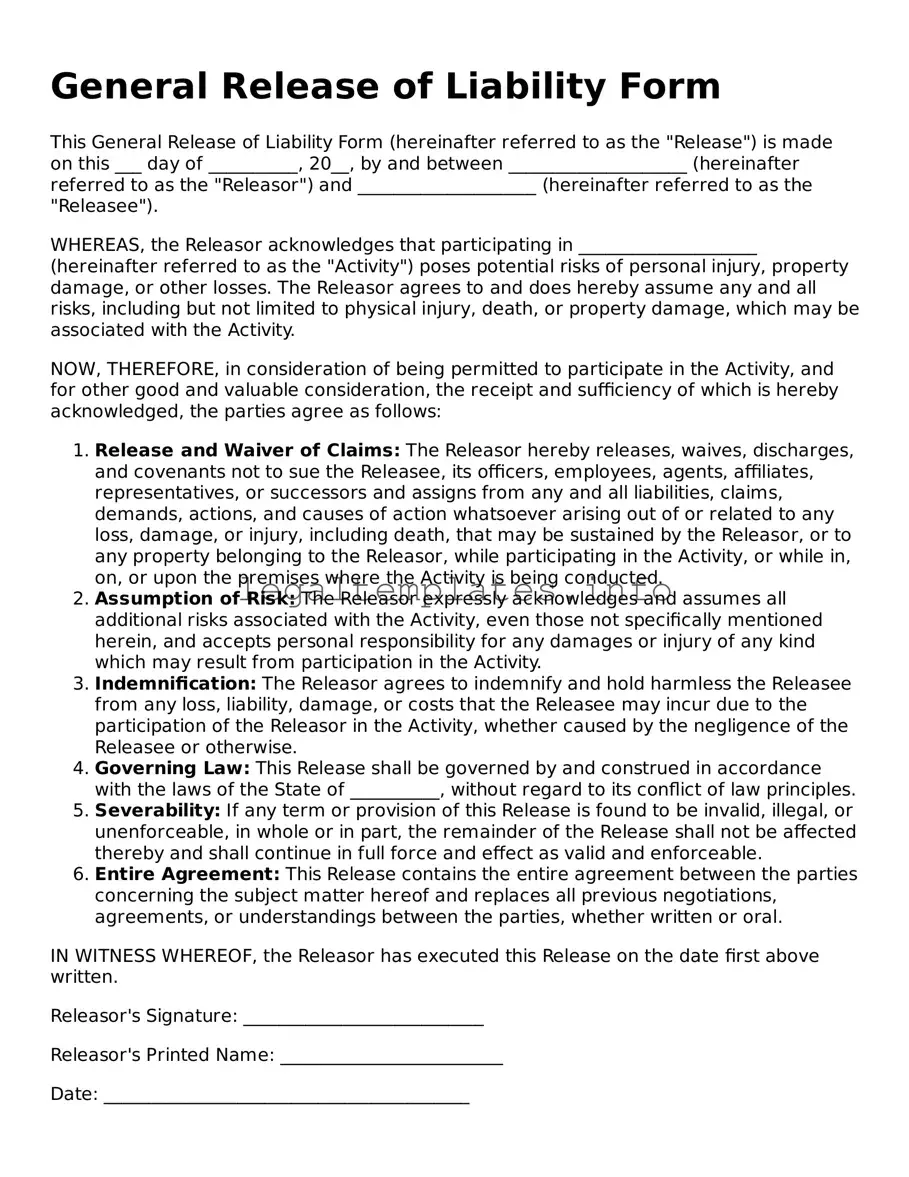General Release of Liability Form
This General Release of Liability Form (hereinafter referred to as the "Release") is made on this ___ day of __________, 20__, by and between ____________________ (hereinafter referred to as the "Releasor") and ____________________ (hereinafter referred to as the "Releasee").
WHEREAS, the Releasor acknowledges that participating in ____________________ (hereinafter referred to as the "Activity") poses potential risks of personal injury, property damage, or other losses. The Releasor agrees to and does hereby assume any and all risks, including but not limited to physical injury, death, or property damage, which may be associated with the Activity.
NOW, THEREFORE, in consideration of being permitted to participate in the Activity, and for other good and valuable consideration, the receipt and sufficiency of which is hereby acknowledged, the parties agree as follows:
- Release and Waiver of Claims: The Releasor hereby releases, waives, discharges, and covenants not to sue the Releasee, its officers, employees, agents, affiliates, representatives, or successors and assigns from any and all liabilities, claims, demands, actions, and causes of action whatsoever arising out of or related to any loss, damage, or injury, including death, that may be sustained by the Releasor, or to any property belonging to the Releasor, while participating in the Activity, or while in, on, or upon the premises where the Activity is being conducted.
- Assumption of Risk: The Releasor expressly acknowledges and assumes all additional risks associated with the Activity, even those not specifically mentioned herein, and accepts personal responsibility for any damages or injury of any kind which may result from participation in the Activity.
- Indemnification: The Releasor agrees to indemnify and hold harmless the Releasee from any loss, liability, damage, or costs that the Releasee may incur due to the participation of the Releasor in the Activity, whether caused by the negligence of the Releasee or otherwise.
- Governing Law: This Release shall be governed by and construed in accordance with the laws of the State of __________, without regard to its conflict of law principles.
- Severability: If any term or provision of this Release is found to be invalid, illegal, or unenforceable, in whole or in part, the remainder of the Release shall not be affected thereby and shall continue in full force and effect as valid and enforceable.
- Entire Agreement: This Release contains the entire agreement between the parties concerning the subject matter hereof and replaces all previous negotiations, agreements, or understandings between the parties, whether written or oral.
IN WITNESS WHEREOF, the Releasor has executed this Release on the date first above written.
Releasor's Signature: ___________________________
Releasor's Printed Name: _________________________
Date: _________________________________________
